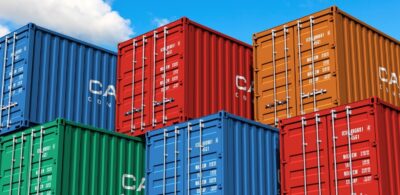Recent WA Supreme Court decision highlights the consequences of poorly-pleaded global claims
14 June 2019
A recent decision of the Supreme Court of Western Australia highlights the consequences of poorly-pleaded global claims.
In Built Environs WA Pty Ltd v Perth Airport Pty Ltd (No 2) 2019 WASC 76, Kenneth Martin J volunteered that, upon motion, he would strike out paragraphs of a pleading concerning a suspected global (or 'modified total costs') claim, due to a lack of detail and clarity.
The decision confirms the principles Beech J summarised in DM Drainage & Constructions Pty Ltd v Karara Mining Ltd [2014] WASC 170 (DM Drainage), which are consistent with the New South Wales Court of Appeal’s decision in Mainteck Services Pty Ltd v Stein Heurtey SA [2014] NSWCA 184.
What is a global claim?
The term 'global claim' generally refers to one of three types of claim: a true global claim, a total cost claim, or a modified total cost claim.
- In a true global claim, the plaintiff claims that multiple interacting events for which the defendant was responsible caused the plaintiff a total loss. The significance of a global claim is that the plaintiff does not need to establish a precise loss arising from each event.
- In a total cost claim, the plaintiff claims that the defendant’s contractual breaches caused the plaintiff loss. The loss in a total cost claim is the actual cost of the work less the work's expected reasonable cost.
- In a modified total cost claim, the plaintiff divides up its additional costs and argues that specific events, for which the defendant was responsible, caused all or part of those costs.
The fundamental difference between a true global claim and a total cost claim lies in what the plaintiff must prove.
In a true global claim, the plaintiff must be able to identify the total loss, but need not identify the causative link between the events and that loss.
In a total cost claim, the plaintiff must be able to identify the causative events but does not need to neatly quantify the loss caused by the events, other than by claiming that all additional costs were caused by the events.
Background
In 2016, Built Environs WA Pty Ltd (Built Environs) sued Perth Airport Pty Ltd (Perth Airport). The proceeding arose from a contract under which Perth Airport engaged Built Environs to perform major works to airport terminals.
In a substituted statement of claim, Built Environs claimed loss and damage totalling over $4.6 million as a result of alleged 'General Drawing Deficiencies'. After Perth Airport raised concerns about the lack of detail in the substituted statement of claim, Kenneth Martin J issued case management orders:
- requiring Built Environs to file and serve expert evidence of the alleged General Drawing Deficiencies; and
- granting leave for Built Environs to plead the facts establishing the allegations and causation of loss relevant to the alleged General Drawing Deficiencies.
Built Environs filed a preliminary expert report, the 'Brannigan Report', which purported to provide further details of the alleged General Drawing Deficiencies. It amended its substituted statement of claim to refer to the Brannigan Report.
Subsequently, Perth Airport sought orders relieving it of the requirement to provide discovery in relation to paragraphs of the further amended substituted statement of claim that were relevant to the alleged General Drawing Deficiencies.
During an interlocutory hearing, Perth Airport moved in the alternative for leave to strike out these paragraphs. It argued that the paragraphs, read with the Brannigan Report, did not contain sufficient details about the alleged ‘General Drawing Deficiencies’ or any detail about how they might have caused financial loss.
The Court's findings
Kenneth Martin J found (at [42]) that Built Environs’ claim, as pleaded, was 'almost certainly a claim that would fall under the rubric of global (or more correctly, a modified total costs) claim within the context of breached construction contracts and claims for breach damages.'
His Honour had extensive regard (at [42]-[47]) to Justice Beech’s observations in DM Drainage, holding (at [47]) that the following observations (which feature at [59] of the DM Drainage decision) reflect the law in Western Australia. In DM Drainage, Beech J held that additional pleading obligations apply when a plaintiff is pleading a global claim or a modified total costs claim. For a total costs claim to succeed, the plaintiff must establish that there were no operative causes of its loss other than events that were the defendant’s responsibility. In a global claim, there is an inference that the defendant's conduct caused the difference between the expected costs and the actual costs. If that inference is to be successfully drawn, the plaintiff must demonstrate that alternative causes are excluded.
Kenneth Martin J found (at [39]) that the Brannigan Report provided no details about the causation of the financial loss:
'Thus the Brannigan report does nothing to unlock the continuing mystery (for the defendant) of how the financial loss and damage the subject of par [15], aggregated down to the nearest cent, and exceeding $13 million, comes about'.
Kenneth Martin J held further (at [50]) that the changes Built Environs made to its statement of claim were only cosmetic, and did not contain the necessary detail. It followed, in His Honour’s judgment, that Built Environ’s position was impermissibly unclear and that the matter could no longer continue with such uncertainty:
'Notwithstanding the time which has passed since the October 2017 chamber summons, culminating in the December 2017 orders, the position over this issue still remains impermissibly unclear. Even at the hearing of the present application, the plaintiff, by senior counsel, would not or could not commit to a clear position as regards it advancing a modified total costs claim or not, asserting that it should not yet be asked to commit itself, in effect, forensically at this stage about what its position is. In my view, the continuing uncertainty on these core questions has endured long enough. It is no longer tolerable.'
Kenneth Martin held (at [56]) that, when moved, he would grant Perth Airport’s application and strike out specific paragraphs of Built Environs’s further amended substituted statement of claim, on the basis that they did not provide the requisite detail or clarity regarding Built Environs’s position about a suspected modified total costs claim.
The implications
One of the implications of global claims is that the defendant faces significant evidential, cost and practical burdens when attempting to unpick the plaintiff’s allegations to establish a defence.
The decision in Built Environs v Perth Airport demonstrates that to successfully plead a global claim, a plaintiff must make clear there is a global claim and specify:
- the events causing the claimed loss; and
- any alternative causes of the loss.
The benefit of a true global claim or total or modified loss claim remains that either:
- the plaintiff does not need to prove a causative link (a true global claim); or
- the plaintiff does not need to quantify the loss flowing from each event (a total or modified costs claim).
However, the decision in Built Environs v Perth Airport demonstrates that some burden does rest on the plaintiff to plead its claim properly to allow the defendant adequate opportunity to prepare a defence.
Tips for pleading global claims
This case provides important lessons for practitioners drafting statements of claim that contain a global claim, total costs claim, or modified total costs claim. The statement of claim must detail:
- the type of claim;
- the events causing the claimed loss; and
- the reasons for the lack of alternate causes of the loss.
Authors

Special Counsel

Senior Associate
Tags
This publication is introductory in nature. Its content is current at the date of publication. It does not constitute legal advice and should not be relied upon as such. You should always obtain legal advice based on your specific circumstances before taking any action relating to matters covered by this publication. Some information may have been obtained from external sources, and we cannot guarantee the accuracy or currency of any such information.



